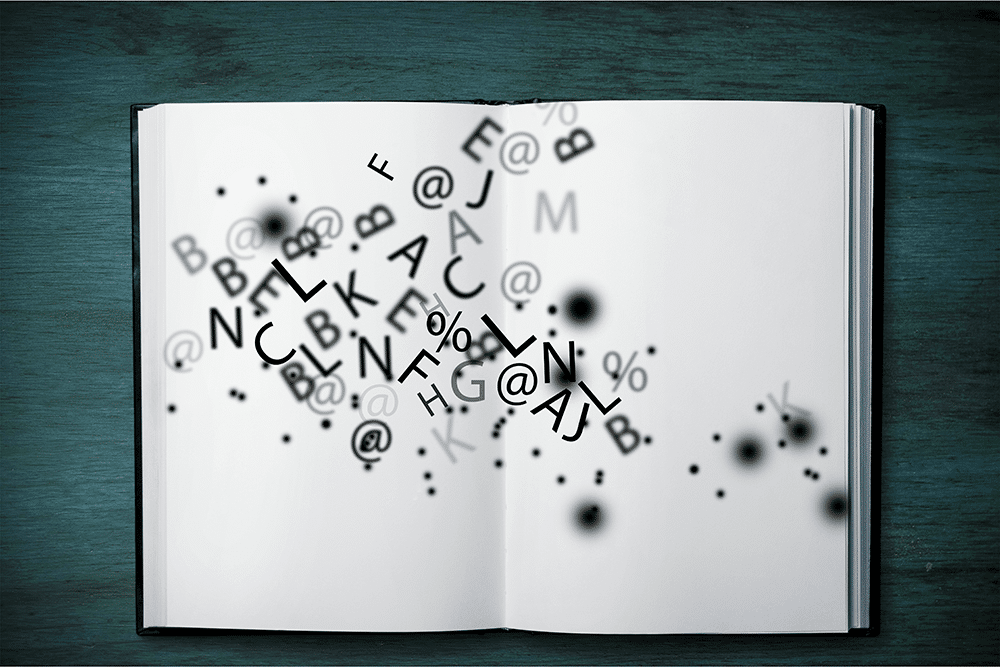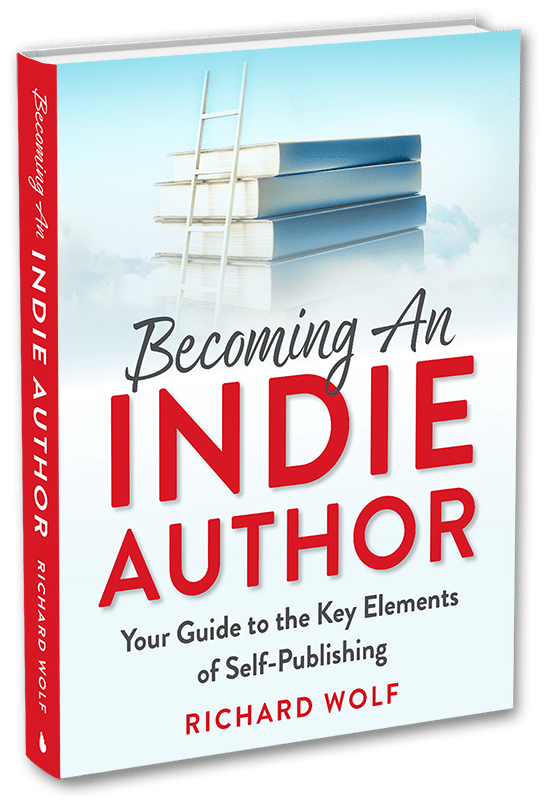It’s in the front and the back of every book, and it really should have a specific order, according to the Chicago Manual of Style (CMOS).
Most manuscripts I receive for layout have been edited by talented editors. Because they know CMOS very well, I typically don’t need to worry about the order of the matter. I always double-check it, though, since we are all humans, and we make mistakes. If you’re an editor reading this, please comment if you find anything I missed.
Knowing the order of matter is good for writers and authors, and my guide below will be your guide if you find yourself forgetting the sacred order.
Front Matter
Half-title page
Most of the self-published books we work on do not have this page, which is similar to the title page but without the subtitle and author. It’s not mandatory to include it in your book.
Series title page
Again, not mandatory. The series title can be added, and most likely is, to the title page.
List of contributors
This would only apply to specific books. For anthologies, the contributor’s name is typically listed in the table of contents. This list can be included in the front or back matter of the book.
Frontispiece or blank page
We prefer to use a blank page facing the title page, but if you want to get fancy, you can use a frontispiece, which basically means a decorative illustration or photo.
Title page
This page should be included in every book and should list the title, subtitle, and author’s name. It is optional to add the publisher’s information. For self-publishing authors, the publishing information includes your publishing company logo and city.
Copyright page
A critical page in your book should contain a copyright notice, ISBN, BISAC codes, and credits for editors, designers, photographers, and illustrators. It can also include legal information, author contact information, and disclaimer if applicable.
Dedication
Mentioning people or groups who you want to express gratitude toward is completely optional. Over ninety percent of the books we create include a dedication.
Epigraph
If you have a short quotation that would be good for setting the tone or theme of your book, it will go here, between the dedication and table of contents.
Table of contents (TOC)
For non-fiction, a TOC is relatively standard. For a memoir, it depends on whether you are titling your chapters or if they are simply chapters one, two, etc. In the former case, a TOC would be a good idea, Not so much for the latter. We’ve created books with a TOC for fiction, but most do not include one. For eBooks, however, ALL books must have a TOC.
Dramatis personae
Meaning “persons of the play” in latin, this section is typically found only in fiction books. It can be titled “List of Characters” or similar, introducing the people or characters the reader will encounter in the narrative.
List of illustrations
If your book has figures, illustrations, etc, you may want to consider adding them to a list.
List of tables
If your book has tables, you may want to consider adding them to a list.
Foreword
A foreword is a brief introduction to your book, written by someone other than you, the author. It’s an optional part of your book. Note the spelling. It’s not forward, but rather foreword. Many an editor has seen this mistake!
Preface
The preface, prologue, and introduction can sometimes seem confusing as to each’s purpose in a book. A preface is always included in the front matter and explains why you wrote the book. This section, too, is optional.
Acknowledgments
Beyond a simple “shout out” in the dedication, acknowledgments are more formal and expanded “thank you” to those who helped you in your writing journey or contributed to the work of the book. Acknowledgments are optional and can be included in either the front or the back matter. We prefer to include them in the back matter unless they pertain significantly to creating the book’s content. It’s your choice, though.
Introduction
Another optional front matter inclusion, this section is for groundwork laying and explains what the reader will encounter when they read the book. An overview of the book’s contents can be included, as well as a “how to use this book” section.
Prologue
You may be asking, “Why is the prologue at the end? Shouldn’t it be before the acknowledgments and Introduction?” Well, CMOS considers a prologue the start of your story and not part of the front matter. Therefore, it should always directly precede the first chapter.
Now, onto the the back matter.
Back Matter
Epilogue
Mainly used in fiction, this section appears at the end of the narrative and gives the reader further reflection and insight..
Acknowledgments
Beyond a simple “shout out” in the dedication, acknowledgments are more formal and expanded “thank you” to those who helped you in your writing journey or contributed to the work of the book. Acknowledgments are optional and can be included in either the front or the back matter. We prefer to include them in the back matter unless they pertain significantly to creating the book’s content. It’s your choice, though.
Appendix
Providing supplementary information or more detailed data that pertains to the text, the appendix can be singular or multiple.
Notes
Unlike a bibliography or references, the notes section includes footnotes or endnotes that are more detailed and appear in the body of the text. Although this section contains endnotes, it should be titled Notes, not Endnotes.
Glossary
If applicable, this section defines concepts, terms, and jargon used within the book.
Bibliography or References
This section is not for footnotes or endnotes. It is where you will add your list of sources cited in the text. This section should be formatted according to the style guidelines of CMOS.
List of Contributors
This would only apply to specific books. For anthologies, the contributor’s name is typically listed in the table of contents. This list can be included in the front or back matter of the book.
Index
This section includes a structure of alphabetical listings of essential terms and concepts and page numbers indicating where the reader can find them in the book.
Author Biography
In the books we create, the author’s biography is titled About the Author and appears as the last item in the book. It can, and usually does, include the author’s photo.
Colophon
This section includes information about the book’s printing and production. Typically, self-published books will not include this.
Whew, that was a long list! Now you have everything you need to organize your book’s front and back matter.
I’d love to hear your questions or comments. Please leave them below or send me a message here.




